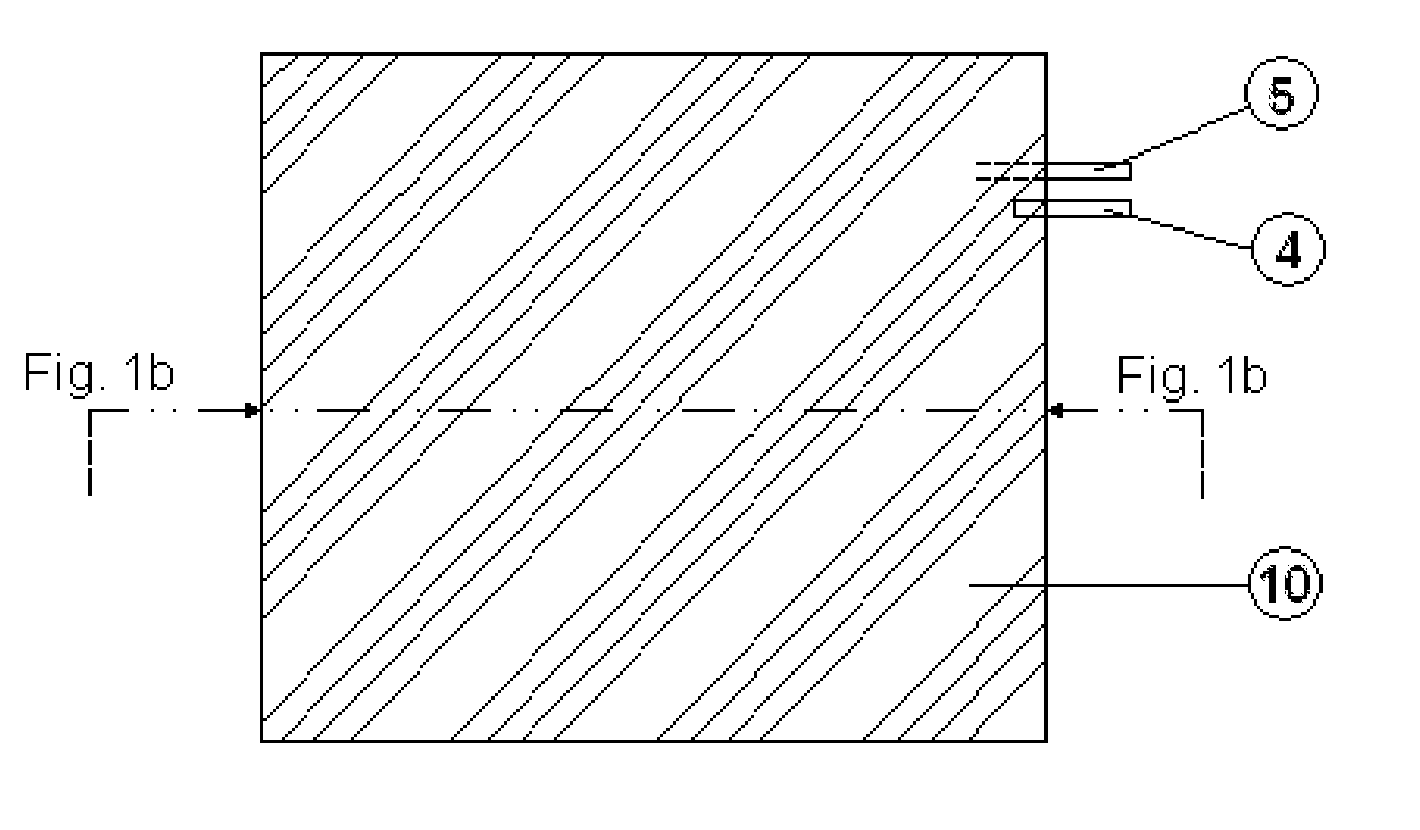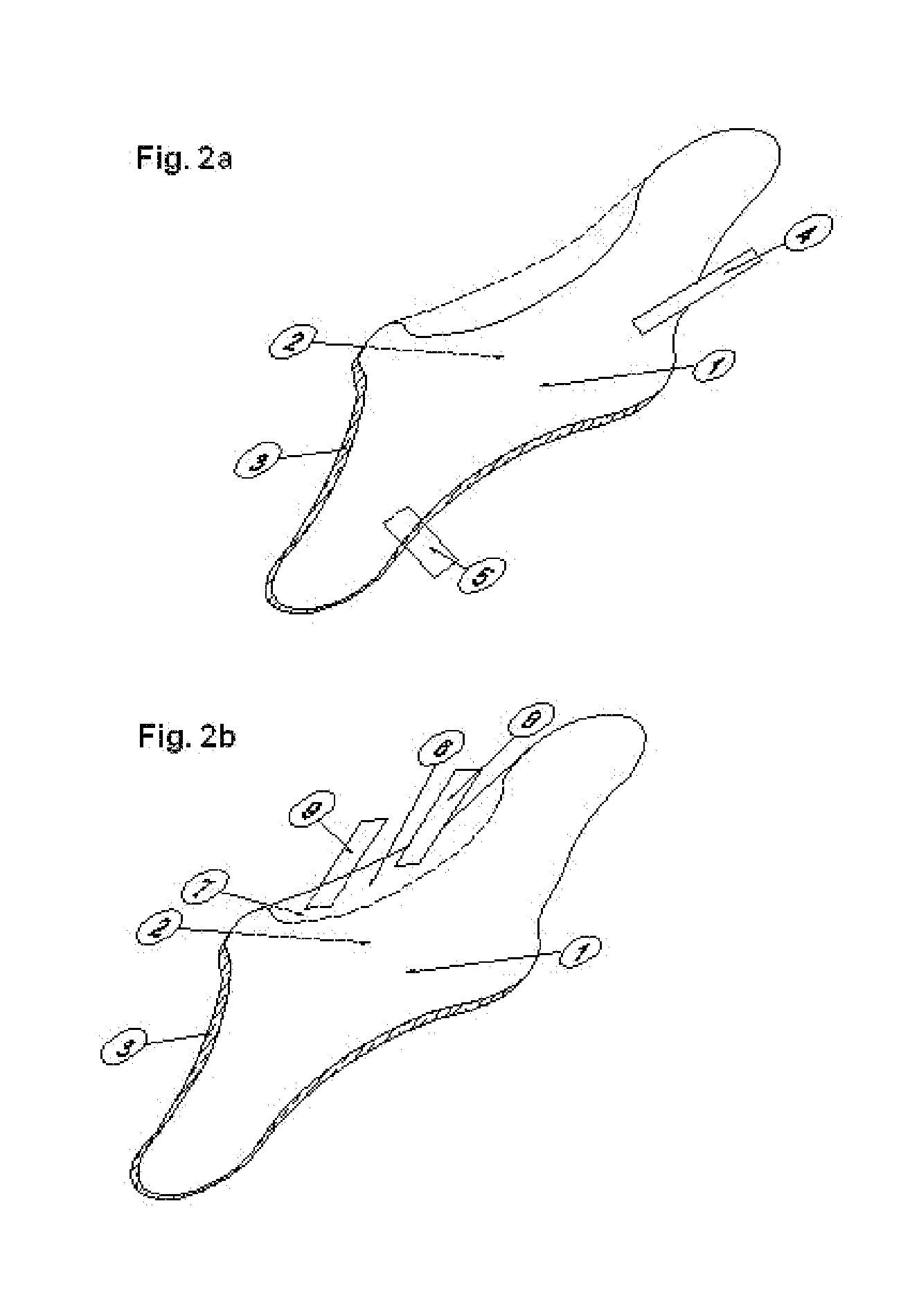Heating element
- Summary
- Abstract
- Description
- Claims
- Application Information
AI Technical Summary
Benefits of technology
Problems solved by technology
Method used
Image
Examples
example 1
[0068]The following polymer compound material was prepared, the percentages being based on the weight of the complete composition:
1. PDMS46.5%2. CB MT (CTC powder)41.2%3. CB FEF (PTC powder)5.2%4. Silica7.2%
[0069]Further 0.36% by weight of the coupling agent based on the weight of the PTC powder.
[0070]The silica is a necessary filler to rheologically stabilize the matrix and increase the distance between carbon particles.
[0071]The powder fractions are sieved, the liquid coupling agent is added and the mixture is ultrasonically treated. All components are compounded to a stiff material that is laminated between copper foils. The laminate is heat treated at approximately 130° C. for
[0072]24 hours, where after curing is performed by irradiation with electron-beams into the compounded material, through the metal foils. The obtained silicone matrix is nearly completely crosslinked to form one sole molecule.
[0073]The obtained material has a trip temperature of about 45° C.
[0074]A multi-la...
example 2
[0076]The following polymer compound material was prepared, the percentages being based on the weight of the complete composition:
1. PDMS43.2%2. CB MT (CTC powder)50.0%3. CB FEF (PTC powder)4.5%4. Silica2.4%
[0077]Further 0.36% by weight of the coupling agent based on the weight of the PTC powder.
[0078]The PTC SIP compound was prepared in the same way as in example 1.
[0079]The obtained composite body has a trip temperature of about 40° C.
[0080]A multi-layered ZPZ foil structure comprising a 0.074 mm thick layer of PTC SIP compound present in between two copper foils of a thickness of 0.012 mm was connected to a power source supplying an AC or DC voltage of 12 V via two electrode strips on the copper foils. The layered structure was cooled to a temperature of −15° C. before switching on the power. The temperature rose to 5° C. within 30 seconds. The maximum equilibrium temperature was 35° C.
[0081]The trip temperature and maximum equilibrium temperature may be adjusted by changing 1) t...
PUM
| Property | Measurement | Unit |
|---|---|---|
| Temperature | aaaaa | aaaaa |
| Temperature | aaaaa | aaaaa |
| Temperature | aaaaa | aaaaa |
Abstract
Description
Claims
Application Information
 Login to View More
Login to View More - R&D
- Intellectual Property
- Life Sciences
- Materials
- Tech Scout
- Unparalleled Data Quality
- Higher Quality Content
- 60% Fewer Hallucinations
Browse by: Latest US Patents, China's latest patents, Technical Efficacy Thesaurus, Application Domain, Technology Topic, Popular Technical Reports.
© 2025 PatSnap. All rights reserved.Legal|Privacy policy|Modern Slavery Act Transparency Statement|Sitemap|About US| Contact US: help@patsnap.com



